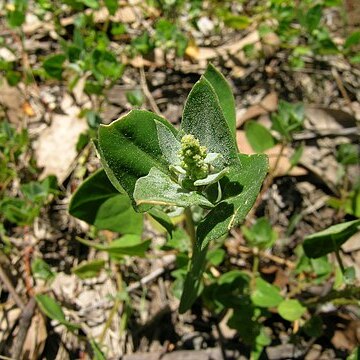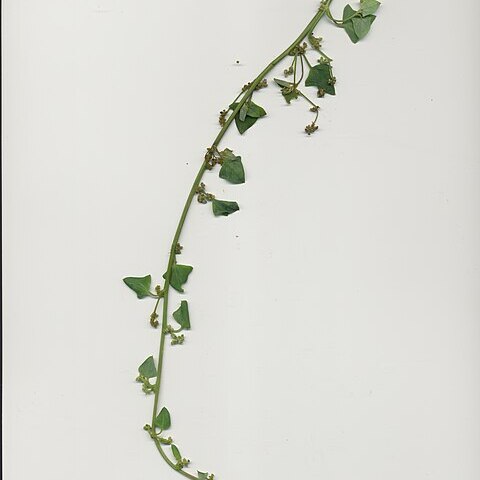Weak prostrate or straggling perennial. Leaves thin, broadly ovate to triangular or hastate with short spreading lobes; lamina 8–15 mm long, glabrescent above, sparsely mealy below. Inflorescence a congested to slender panicle; flowers sessile. Perianth depressed-globular, 0.5–1 mm diam.; tepals linear to ovate or obovate, sparsely mealy or glabrous. Stamen 1 or absent. Fruiting perianth: tepals oblong to obovate, herbaceous or indurated, smooth; pericarp thin, often black and prominently papillose. Seed c. 1 mm diam.; testa slightly granular or striate.
A herb. It keeps growing from year to year. The branches are twining or lie along the ground. The leaves are alternate and a broad triangle shape. They are 5 cm long. The flowers are in a spike or reduced in clusters in the axils of the leaves.


